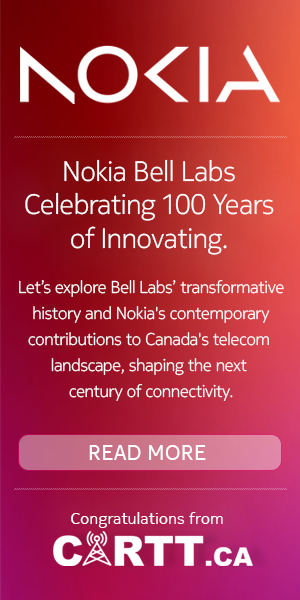
No easy answers
TORONTO – Yes, there were a ton of regulatory lawyers and policy wonks there and probably not as many newfangled content creators and distributors as organizers hoped, but the two-day Discoverability Summit, which wrapped up Wednesday in Toronto, seemed to us a worthwhile exercise even if the problem of discoverability remains unsolved and looks to be a challenge for some time.
The summit will definitely have helped flesh out ideas for the federal government’s just-started review of all things Canadian content.
1. What goes viral? No one really can predict. During the Youth Summit portion held last week in Toronto even the Eh-Bee family – which makes popular YouTube videos for a living, don’t really have a reliable recipe. They just do what they think is funny. That sentiment was followed up Wednesday by Entertainment Tonight Canada multimedia producer Jeremy Singer who noted everything they try on social media, even its popular Awards-season Vine series with Alan Thicke – “is all trial and error.” The good part is that you can get 200,000 views “for next to nothing” in terms of costs of production and distribution, he added.
2. Are we just reforming the old system, but on the Internet? When Facebook is looking like it wants to be a broadcaster with Facebook Live (and Twitter with Periscope), Hulu is putting together a “skinny” bundle of content and Vessel is aggregating YouTube content and giving subscribers a 72-hour sneak peek at some of the most popular stuff (for $3 a month) – aren’t we just recreating much of what we already have now – just online and under other banners? Is the business employing some 640,000 people in Canada being disrupted so that money can simply flow elsewhere (like Silicon Valley)?
3. What are other business models? The big money remains in TV advertising and subscription fees (for specialty channels and for OTT services like shomi and CraveTV), but what are the new business models? They remain few and far between but one discussed involved YouTube new show The Young Turks. They ask their subscribers to shop on Amazon using a special URL – and then TYT gets a small percentage of all sales to Amazon (be it for books, blenders or smartphones) done via that special URL.
4. Can Netflix be forced to create and stock Canadian content? Ok. Not so complex of a question (we think the answer to that is a hard “No”), but during a session on Wednesday, filmmaker Dylan Reibling said Netflix doesn’t appear to be doing much for, or in, the Canadian market and wondered aloud (to some applause in the room) on whether we should “slap a 30% Cancon quota” onto the algorithms the big streamer uses to select and promote video content in Canada. While in Toronto, Heritage Minister Mélanie Joly visited Vice’s new offices and had an answer for that: “We are against a Netflix tax.”
5. Does the Minister have any discoverability answers? She spoke Tuesday and urged everyone to get involved in the process she just started to overhaul the Canadian content rules and regulations in Canada, saying the cultural sector offers huge hope in building a more innovative Canadian economy. But, will these new reforms pull apart the Let’s Talk TV decisions? Can you dive into the Broadcasting Act and look to support Canadian creators and not make it a years-long process? And, if we’re going to talk more support, how many other ministries and agencies (Revenue Canada, Treasury Board, Competition Bureau, ISED) have to be pulled into this?
6. How scary are algorithms for discoverability? They’re as smart – or as dumb – as the data and its interpretation, either by humans, or machines. Software now learns what users surf to and what they like and will constantly suggest things it has figured out you like as Facebook, to use the biggest example, follows your click path around the web (even advance set top boxes like TiVo learns what its users like). But if more and more people end up in a filter bubble, it gets increasingly difficult for new content to burst through (especially if it’s stuff with which users might disagree). What happens to diversity under that growing scenario? Facebook and others are also finding that the more content served up that users agree with – because the software has learned to serve that up – the less they tend to interact with it. “Algorithms… have put us in this spot,” said Daniel Lemire, a computer science professor at the University of Quebec.
7. How is success to be measured? Ad agencies and others like to point to the analytics provided by the digital behemoths like Google and Facebook as providing better return on investment. However, TV ratings services like Numeris in Canada are independent, vetted, third parties that measure how people watch entire shows while Facebook and Google are their own data miners and often count a “view” when someone has watched mere seconds of a video. “We take for granted how excellent a system we have in Canada,” said Mark Allan, senior director of research and analysis at the CBC, but data from social media – and from cable set top boxes – must be included to get an overall picture of who is watching what, where, when, for how long, and how engaged they are with what they see. When we have and use that data, it may well aid in content discoverability.
8. What about The News? It’s not easy being a journalist these days. We always seem under siege as business models shift while people move from platform to platform often dropping the old (printed paper, six o’clock news) for the new – with resulting job losses. But, people are still voracious news consumers. That means publishers and broadcasters must go find them and pull them in with new stories and strategies. “If you ignore Facebook and Reddit and the like, you do so at your own peril,” said Erika Tustin, digital editor at The Toronto Star. Some posts on Facebook for the CBC show Interrupt this Program get higher viewership than the TV show itself, added Frank Fiorito, the show’s co-creator.
With the exponential, global, surge in content available to consume, discoverability is a massive global problem that Silicon Valley – not just the Canadian content industry – is trying to solve. These are eight good questions we heard over our two days. Hands up if you have answers – or even more questions. Let us know (we’ll print some, if readers are so motivated) and let Minister Joly know.




